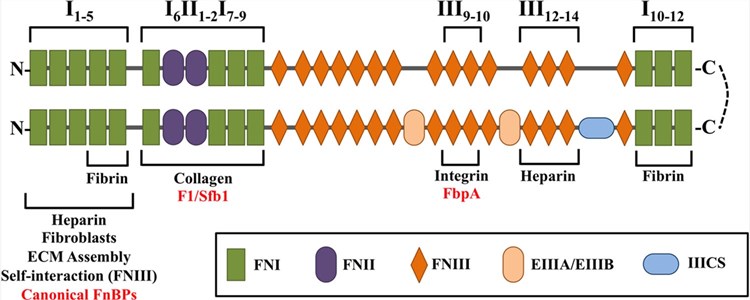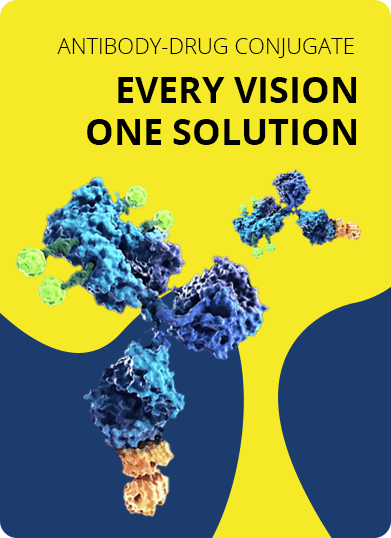- Home
- ADC Development
- Antibody Discovery for ADC Development
- Tumor Microenvironment Antigen Specific Antibody Discovery
- Tumor & Vasculature Antigen Specific Antibody Discovery
- Anti-Fibronectin Antibody Discovery
Anti-Fibronectin Antibody Discovery Service
Creative Biolabs offers anti-fibronectin antibody development services for our global clients. Focusing on applying excellent science and advanced technology to develop monoclonal antibodies (mAbs) against antigens in tumor stroma and vasculature, especially those antibodies with great potential to become one of the major components in the first-in-class therapeutics, such as antibody-drug conjugates (ADCs), we guarantee to generate antibodies with high affinity and good specificity, which are fully functional and ready to use in related assays.
Fibronectin
Fibronectin is a large multi-domain extracellular matrix (ECM) glycoprotein with a fundamental role in blood vessel morphogenesis during embryonic development and pathological angiogenesis. It is strongly expressed around developing blood vessels during embryogenesis. Splice isoforms of fibronectins (EDA and EDB) are over-expressed in the majority of malignancies, whereas being undetectable in most normal adult tissues except for the female reproductive system, thus providing the opportunity to treat different cancer types with the same product. As figure 1 shown, fibronectin is a dimeric protein of 240-270 KDa, composed of 2 similar or identical monomers joined by a pair of disulfide bonds near the C terminus. Each monomer is composed of 12 FN type I repeats (FNI), 2 FN type II repeats (FNII), and 15 FN type III repeats (FNIII). The lower branch contains splice variants, including two alternatively spliced FNIII domains (EIIIA/EIIIB) and one FNIII connecting segments (IIICS).
 Schematic diagram of the multidomain architecture of a fibronectin heterodimer.1,2
Schematic diagram of the multidomain architecture of a fibronectin heterodimer.1,2
Non-internalizing Antibody-drug Conjugates
Tumor progression induces significant modifications in tumor microenvironment components, particularly those of the ECM. Many of these tumor ECM components are shared by all solid tumors, accounting for general properties and functions such as cell invasion and angiogenesis. More remarkable, cancer cures can be obtained without antibody internalization, by the targeted delivery of a suitable disulfide-linked ADC to the subendothelial ECM in solid tumors. Following extravasation, ADCs release the cytotoxic payload and initiate tumor cell death. Dying cells subsequently release high concentrations of reducing agents such as cysteine, glutathione from their intracellular compartments into the surrounding environment, thus triggering the additional release of drug in a self-amplifying fashion. The release of cytotoxic payload in the extracellular environment may facilitate a by-stander effect, as the drug can diffuse and internalize in neighboring cells.
Anti-fibronectin Antibody
Because of strongly expressed in many solid human tumors and nearly undetectable in normal tissues, EDA and EDB of fibronectin offer appealing targets for ADC development. Many reports described the isolation and characterization of high-affinity human antibodies specific to the EDA (e.g., F8) and EDB (e.g., P12, L19 (scFv)) domain of fibronectin, exhibited an impressive tumor targeting selectivity in biodistribution experiments. In light of the existing results, we believe that the antibodies against EDA and EDB of fibronectin represent a building block of proven tumor-targeting ability.
Equipped with state-of-the-art research and manufacturing facilities, Creative Biolabs is dedicated to helping our clients design and prepare highly customized antibodies using our featured services. With the novel technology platform and professional experiment services, Creative Biolabs gets ready to provide you with the best anti-fibronectin antibody development services. Please feel free to contact us for more details.
References
- Hymes, J. P., and T. R. Klaenhammer. "Stuck in the middle: fibronectin-binding proteins in Gram-positive bacteria." Front Microbiol 7: 1504." 2016.
- Distributed under Open Access License CC BY 4.0, without modification.
For Research Use Only. NOT FOR CLINICAL USE.

Online Inquiry
Welcome! For price inquiries, please feel free to contact us through the form on the left side. We will get back to you as soon as possible.
